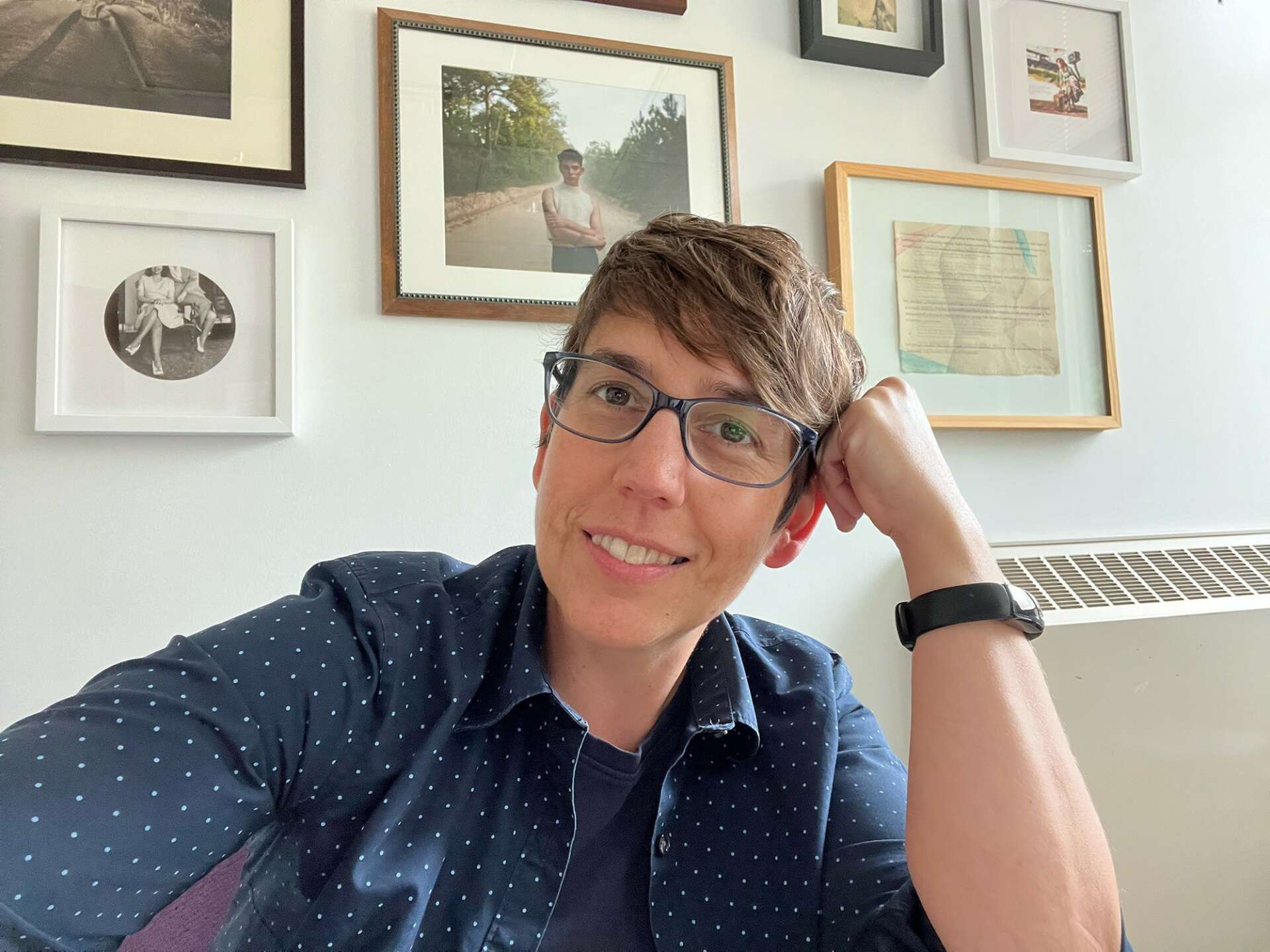Alright – so today we’ve got the honor of introducing you to Kris Sanford. We think you’ll enjoy our conversation, we’ve shared it below.
Alright, Kris thanks for taking the time to share your stories and insights with us today. Can you talk to us about a project that’s meant a lot to you?
Finding Our Place is a portrait series where I revisited folks in the LGBTQ community 16 years after originally photographing them. The project started out as a series of environmental portraits of gay and lesbian people in their homes and was my undergraduate thesis work in 2000. The goal at the time was to increase visibility. Fast forward to more than a decade later, after marriage equality passed in 2015. I was contemplating new projects and wondered what happened to the folks from that earlier series. A couple of them were personal friends, but most were folks I had lost touch with. I coincidentally reconnected with one person, an old friend, through a dating app and that helped sparked the idea. Social media, which wasn’t a tool available in 2000, was helpful in finding people and reaching out. Revisiting the series was meaningful for the content, this idea of reflecting on representation and change over time. But the actual process of reconnecting with people, and often traveling to make the portraits, was the more meaningful part. In addition to rephotographing my portrait subjects I also conducted some video interviews, which provided new creative challenges. The entire project provided many experiences that were both personally and professionally rewarding. The friend I coincidentally “bumped into” on the dating app has passed since I rephotographed her for the series. I’m so grateful that I was able to include her and that it gave us some extra time together.


As always, we appreciate you sharing your insights and we’ve got a few more questions for you, but before we get to all of that can you take a minute to introduce yourself and give our readers some of your back background and context?
I’m a lens-based artist with an affinity for people and process. My curiosity about people makes me drawn to them as creative subjects. I like being invited into someone else’s world and to just look around, so photography gives me that license to observe and record. I’m also interested in psychology and the narrative potential of the medium. I first fell in love with photography in my high school’s darkroom and I’ve been working with it in some way ever since. Most recently I combine digital and darkroom methods, capturing images with a digital camera or flatbed scanner and printing using an alternative photographic process, like the cyanotype process.
As a teacher I get to nerd out on photography with new students every semester and I’m always grateful for that opportunity. I’m most proud of my work in the classroom. As a professor at Central Michigan University I get to nerd out on photography with new students every semester and I’m always grateful for that opportunity.


Are there any resources you wish you knew about earlier in your creative journey?
There is more support for creatives than many realize, but it comes with a lot of work and a fair amount of rejection. It takes time to research and write grant applications, for example, but I would encourage folks to put in the time. It took me too long to realize that the more opportunities I applied to, the more success I gained. It took time and a collection of rejections, but the acceptance rate grew over time as I got better at figuring out what was worth applying to. The materials used for one application can often be easily be reworked for another application. So researching opportunities and beginning that process is usually the hardest part. Setting goals is helpful in this process, like applying to one thing a month for starters.


How about pivoting – can you share the story of a time you’ve had to pivot?
Like many, I had to pivot during the earlier days of the pandemic. In spring of 2021 I had planned to travel around the country and work on a new portrait project. With limited access to vaccines at the time, I tabled the portrait project and worked from my basement studio creating my latest project The Normal Mind. Instead of going out in the world I turned inward and used found vintage material, like old psychology books and found snapshots from antique stores, that I deconstructed and reassembled. The resulting images were then printed using the cyanotype process, also known as blue printing, which only requires the sun to expose. This pivot required less resources, no travel, and led me in a different direction with my work.

Contact Info:
- Website: www.krissanford.com
- Instagram: @kris.sanford
Image Credits
Kris Sanford


